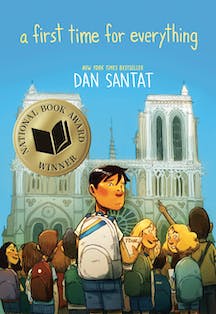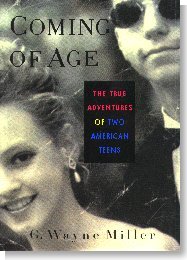
Ahhh, thirteen! It is the best of ages (Finally a teenager! Finally some independence!) and the worst of ages (“What the heck is going on with my body?” “Why are my friends acting so weird?”) Author/illustrator Dan Santat sweetly and hilariously examines the ups and downs of thirteen in this graphic memoir of his first time overseas. Dan is a quiet kid who’s learned that the best way to survive middle school is to keep his mouth shut and his head down. Luckily, as someone who loves to draw and and dream, that’s not too hard. But when his parents decide he needs to broaden his horizons by taking a three week trip to Europe with some of his classmates the summer before high school, Dan is is forced out of his shell in a big way. Confronted by new sights, sounds, smells and feelings, at first Dan is overwhelmed by the sheer size of the world outside his small California town. Then after exploring Paris and climbing the Eiffel Tower, Dan not only finds his people (Braden and Darryl), but he begins to find his footing. When his camera dies, he turns to his sketch book and starts drawing all his first time memories. (Remember friends, in 1989 there weren’t any cell phones!) He even works up the courage to start talking to Amy, a cute girl from another school. But then Dan starts worrying about what will happen when he gets home. Will he still be the same old awkward Dan? Or can he be someone new?
This heartfelt memoir is packed with Santat’s specific middle school memories that will be universally true for anyone who is, or ever was, thirteen: Being embarrassed by parents. Being mercilessly teased by friends about someone you have a crush on. Feeling on top of the world when the person you like likes you back, and devastated when they don’t. In thrall to older kids who seem to know so much more, even though they are only a few years ahead of you. Discovering you’re stronger, cooler, smarter, kinder, braver than you thought. It’s all here, and no current or post adolescent will leave these pages without feeling seen. The author’s note, actual photos and acknowledgements will be especially delightful for Gen-Xers like me, who are Santat’s peers and remember this time very well (I was 16 in 1989. I KNOW. GAWD.) Please make sure to find this wonderful tome at your nearest library or bookstore ASAP! You won’t be sorry.












